The Dakar Rally stands out as one of the most iconic, grueling, and famous events in the world. With navigation as crucial as speed and temerity, no one day is the same as the other.
While Stéphane Peterhansel duked it out with Nasser Al-Attiyah for overall victory in the car category, there were plenty more who fought their own battles in the trucks, quads, SSVs and bikes.
Regrettably, these battles by-and-large escaped the limelight during the coverage of the rally, but DirtFish has taken a closer look at some of the untold stories of the 43rd edition of the classic rally raid.
Tensions flare in SSV
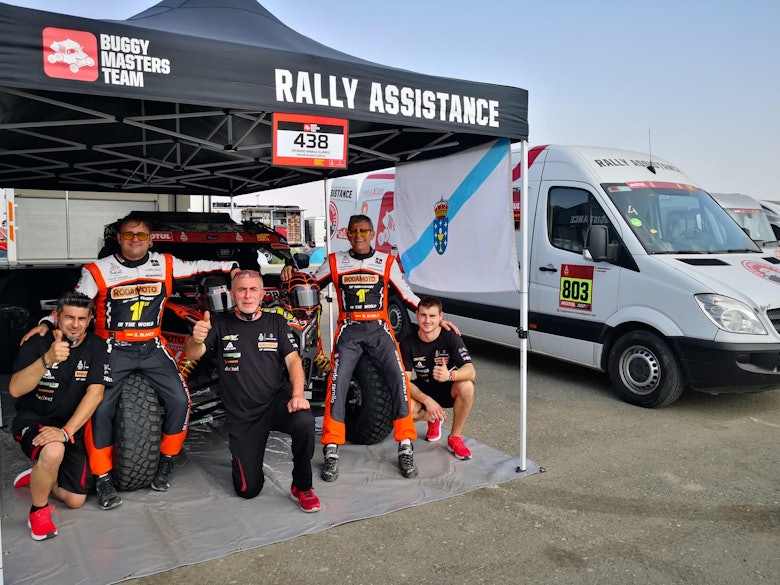
Photo: Buggy Masters Team
Racing in the desert can cause friction, especially when approaching the end of the rally. In perhaps one of the more bizarre episodes in Dakar history, Spanish SSV driver Ricardo Ramilo had to drive a significant portion of stage 11 on his own after his co-driver abandoned him before the end of the timed section.
Navigator Xavier Blanco jumped shipped – or was he pushed? – just over 100 miles into the 288-mile Al-Ula-Yanbu stage, after a disagreement.
Speaking to Spanish sports newspaper AS, Blanco said: “My decision has been due to the behavior of the driver towards me. I said I didn’t want to go up, and he said: ‘okay, you leave’.
“In the team we have been putting up with this character for 15 days, if you have seen the videos you have been able to give an account of the level he has.
“Next, what has done has been to abandon me, literally, I have abandoned myself in the middle of the desert.”
Their Buggy Masters Team boss Eudald Noe and a mechanic had to go into the stage to retrieve Blanco.
“He called us, gave us the location and I personally, together with another mechanic, went to get him to the track and we just arrived at the camp,” Noe explained to Marca.
Ramilo disputed that he told Blanco to get out and insisted that he was the one who had been abandoned.
Loeb’s 14-hour turmoil in the desert
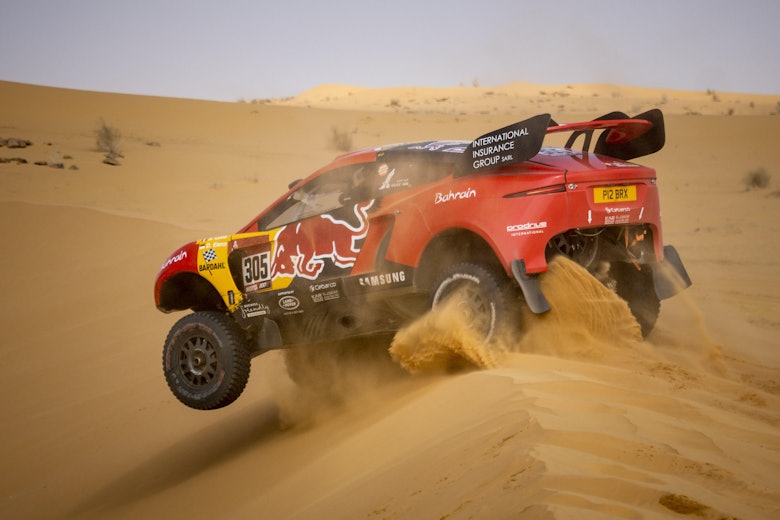
It’s safe to say that Sébastien Loeb and Daniel Elena’s return to the Dakar Rally did not go according to plan on their first competitive outing with the Prodrive-run Bahrain Raid Xtreme’s 4×4. A multitude of punctures plagued the nine-time World Rally Champions before a five-minute penalty for speeding compounded their misery.
Unfortunately, that wasn’t their worst day of the rally. That came on day six, on the stage just before the rest day in Ha’il.
After posting the fifth fastest time at the first waypoint 29 miles into the Al Qaisumah-Ha’il stage, things were looking good for Loeb until an impact broke the left rear suspension arm on his Hunter BRX1.
With limited spares available to make repairs, Loeb and Elena had to wait four hours for their assistance truck to get to them on the stage. But when the truck arrived, the mechanics found that they had only two right-rear suspension arms and no left rears, necessitating a trip back to the bivouac and then back onto the stage, costing another eight hours.
Loeb and Elena were stranded as night fell but were helped out by the TV helicopter landing and providing food rations to the pair as they sat together over a man-made fire in the middle of the desert. Once the repairs had been made – a mere half-hour job no less – Loeb drove the special in darkness, making it back to the bivouac at close to 2am. Thankfully, the rest day followed and Loeb and Elena understandably shirked media duties to catch up on some much-needed sleep.
The outsiders
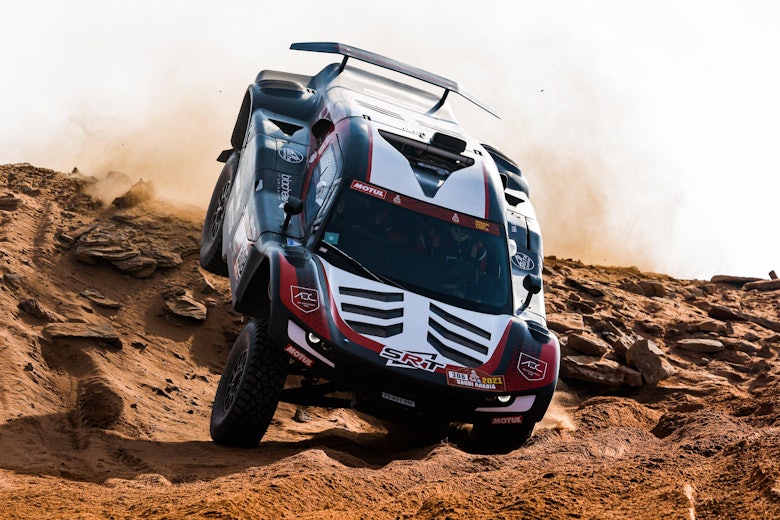
Photo: Florent Gooden/DPPI
With all the attention on the battle between Peterhansel and Al-Attiyah for the win, and Carlos Sainz’s continuing navigation issues, the exploits of some of the rally’s outsiders went somewhat under the radar.
Bad luck was a common denominator for Mathieu Serradori (SRT Racing Century CR6) and Cyril Despres (Abu Dhabi Racing Peugeot) during the opening week, but both enjoyed encouraging stages where they could showcase their vehicles’ potential.
Serradori had been as high as third overall after three stages, keeping his nose clean as Sainz, Loeb and Yazeed Al Rajhi hit trouble. A navigation error on stage four dropped him over 20 minutes before losing a wheel on stage five.
Despite this, Serradori produced his best stage of the rally on stage 10 when he took the fight to – and had the better of – Peterhansel before breaking down once more. He finished 44th by the end.
Despres, who teamed up with explorer and climate activist Mike Horn, had a disappointing first week and found himself an hour-and-a-half down after just three stages.
Nevertheless, week two produced far more luck and allowed the former biker to display his true pace, setting top-five times in three of the last five stages and finishing 10th overall.
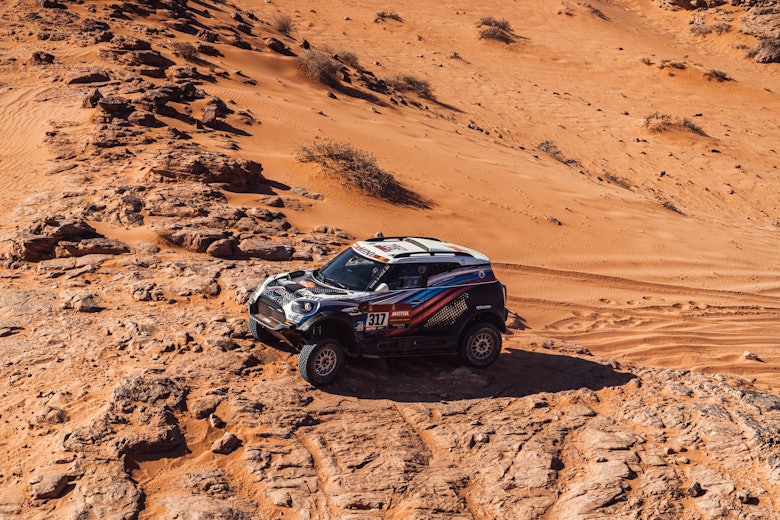
Photo: X-raid Team
Jakub Przygónski was by far the best of the rest, taking his Toyota Hilux co-run by Overdrive Racing and Orlen Benzina Team to fourth place, 2h35m03 behind Peterhansel and almost an hour ahead of Nani Roma.
The best battle at the end of the rally was that between X-raid Team’s Vladimir Vasilyev and Sheikh Khalid Al Qassimi, with the pair initially separated by just seven seconds at the finish in Al Qassimi’s favor until a five-minute penalty dropped the ex-WRC driver behind the Russian Mini driver in the final standings.
Vasilyev had been the quietly impressive performer in the top 10 throughout the rally, having kept out of trouble and overcoming the bulk of the navigational hazards thanks to co-driver Dmtry Tsyro.
The spirit of the Dakar
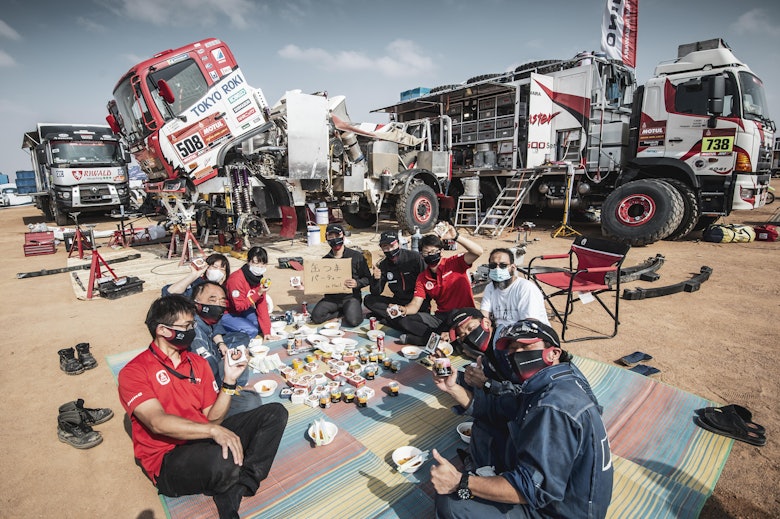
Photo: Charly Lopez/ASO
There were a number of reasons why this year’s Dakar brought people together more than others. Not least because of the spate of cancellations and postponements of many motorsport events over the past nine months.
Dakar was always going to happen and in creating its own COVID-19 bubble within the bivouac (nobody was allowed to leave it throughout the 12 days), there was a greater sense of camaraderie. Instead of opting for a couple of nights at a nearby hotel, everyone – including drivers, riders, mechanics, officials and media spent nights and days in the same make-shift service park.
For co-driver Michael Orr, it was a unique chance to experience the true Dakar experience of recounting stories around a campfire, eating together and generally embracing the occasion.
“The whole feeling of the rally is amazing, you know?” Orr told DirtFish.
“Even when you finish the day, normally everyone is trying to run off to hotels that have been booked 30km away, but since we were in a bubble, we’re all together.
“The atmosphere is brilliant. Everyone sits around outside eating their dinner, telling stories and everyone’s just relaxed. I hope it stays the same after COVID-19, for future years.”
Not only that, but the bubble-enforced bivouac also allowed some drivers to conduct a bit of business as well!
Yazeed Al Rajhi managed to get an upgrade on his current motorhome by purchasing Sheikh Khalid Al Qassimi’s existing one during the rally, something which might not have been possible in a hotel car park any other year.
Dakar Classic
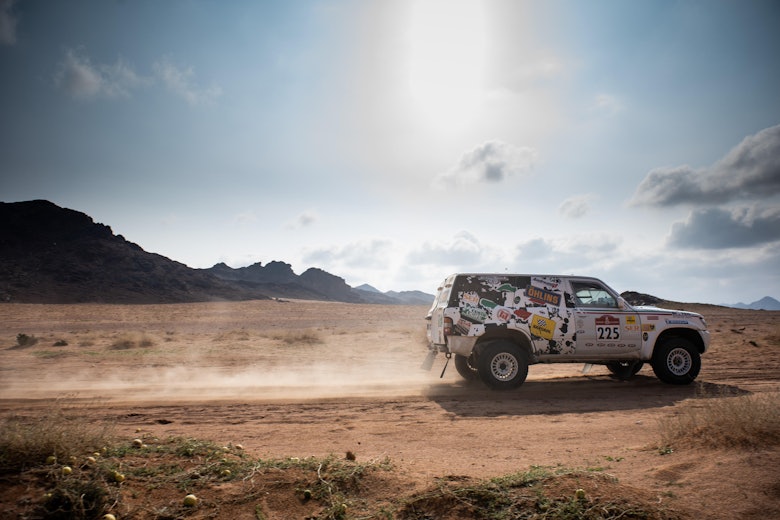
Continuing the spirit of the Dakar was the introduction of a new historic, non-competitive class for pre-2000 cars to take on the same stages as the main players. It allowed a number of cars from yesteryear to grace the sandy tracks and mammoth dunes and an equal amount of nostalgia too.
Cars included the Volkswgen Iltis, similar to the one Freddy Kottulinsky took to victory on the 1980 edition of the rally, a former factory Mitsubishi Pajero and a René Metge-inspired modified Porsche 911.
The cars, much like the crews steering them, soon grew exhausted but the desire to get to the finish never faltered and the Dakar Classic was justified by an impressive turnout of 25 entries.





